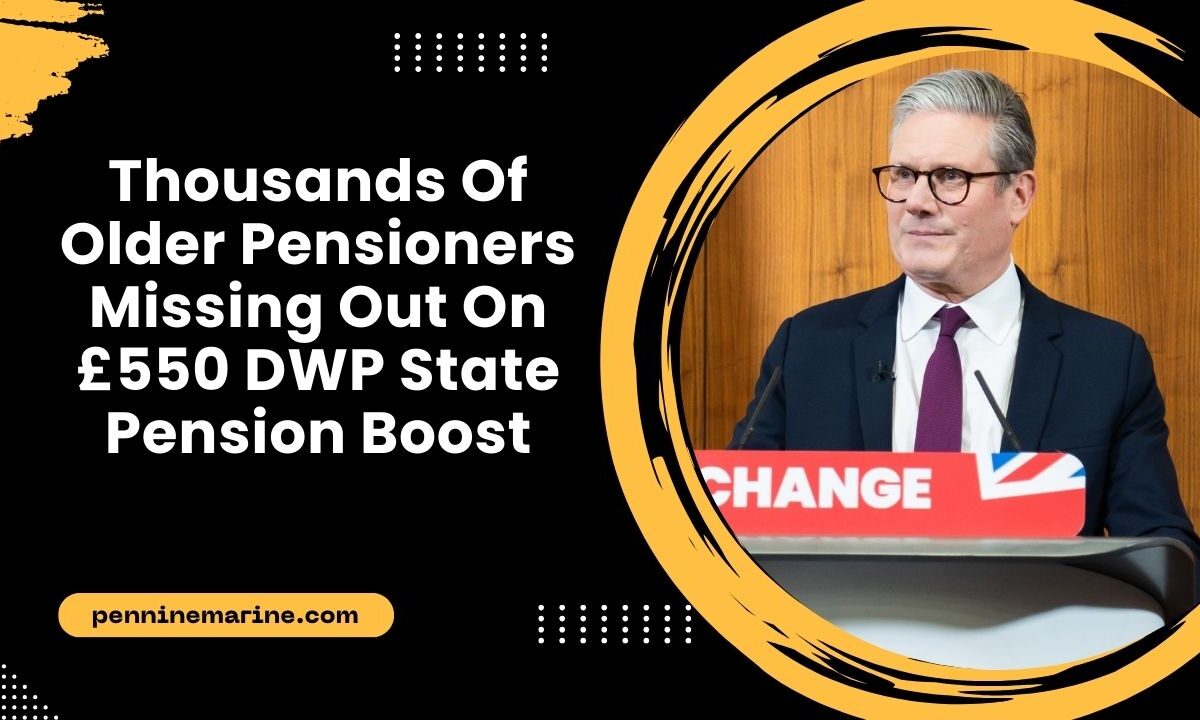A major £550 annual boost in state pensions, thanks to the Triple Lock guarantee, is set to benefit many retirees in April 2026.
However, older pensioners—those who began receiving their basic pensions before 2016—are being left significantly behind.
Here’s a breakdown of who gains, who misses out, and why the disparity is widening.
What Is the Triple Lock and Who Gets the £550 Boost?
The Triple Lock is a UK policy ensuring pension increases each year by the highest of inflation, wage growth, or 2.5%.
With wage growth currently at 4.6%, pensioners on the new State Pension—introduced in 2016—are expected to receive a £550 annual uplift, bringing their pension to around £12,524 per year.
This boost applies to those first reaching pension age after April 2016, i.e., recipients of the new State Pension.
Why Older Basic State Pensioners Get Less
| Pension Type | Weekly Rate (2025) | Estimated Weekly Rate (2026, +4.6%) | Annual Total (2026) | Difference vs New Pension |
|---|---|---|---|---|
| New State Pension | £230.25 | ~£240.84 | ~£12,524 | — |
| Basic State Pension (Old) | £176.45 | ~£184.57 | ~£9,598 | ~£2,926 less |
| Annual Difference | — | — | — | ~£2,926 shortfall |
These pensioners see a smaller cash uplift, translating to about £8 per week or less than £400 per year, rather than the full £550 boost.
Why the Gap Exists
The unequal gains stem from differing baseline amounts. While both pension types receive the same percentage increase, the lower starting point of the old basic pension means the absolute uplift is much smaller.
Consequently, older pensioners lose out on over £2,900 annually compared to recipients of the new State Pension.
The Broader Impact on Older Pensioners
- Greater Financial Strain: The significantly lower uplift adds pressure on older pensioners already facing rising living costs.
- Complex Pension System: The superior perks of the new State Pension highlight inequality rooted in convoluted pension eligibility rules.
- Reliance on Pension Credit: Many basic pensioners may need to claim Pension Credit, which can top up income up to near the value of the full new pension—but it’s means-tested.
What Pension Credit Offers
Older pensioners with no additional income can claim Pension Credit, which currently boosts income to nearly the level of the new State Pension (around £227/week).
With the Triple Lock applied, this could rise to around £237/week, helping narrow the gap—but those with savings or income above the threshold are ineligible and therefore lose out on this top-up.
What This Means Going Forward
- The disparity is structural and will persist unless pension policy is revised.
- The forecasted £550 increase highlights how current rules disproportionately favor newer pensioners.
- Calls are mounting for reform, especially with rising sustainability concerns around the Triple Lock in the long term.
While the £550 state pension boost in April 2026 offers welcome relief to new pensioners, older state pensioners on the basic pension receive much smaller gains, often falling short by nearly £3,000 annually.
This disparity reflects entrenched inequalities between the old and new pension systems. For many reliance on Pension Credit becomes essential—but not all qualify. Policymakers must address this uneven landscape to ensure fairer outcomes for all retirees.
FAQs
Why am I only getting a small increase if I started pension before 2016?
The basic State Pension has a lower base, so even with a 4.6% Triple Lock increase, the actual uplift in cash is much smaller compared to the new State Pension.
How much less do older pensioners get compared to new pensioners?
Based on estimated 2026 rates, older pensioners receive about £9,600 annually, whereas new pensioners get about £12,524—a difference of around £2,900 per year.
Can Pension Credit help me make up the difference?
Pension Credit can raise your income close to the full new State Pension level (around £237/week, if increased by the Triple Lock), but eligibility depends on your income and savings.

